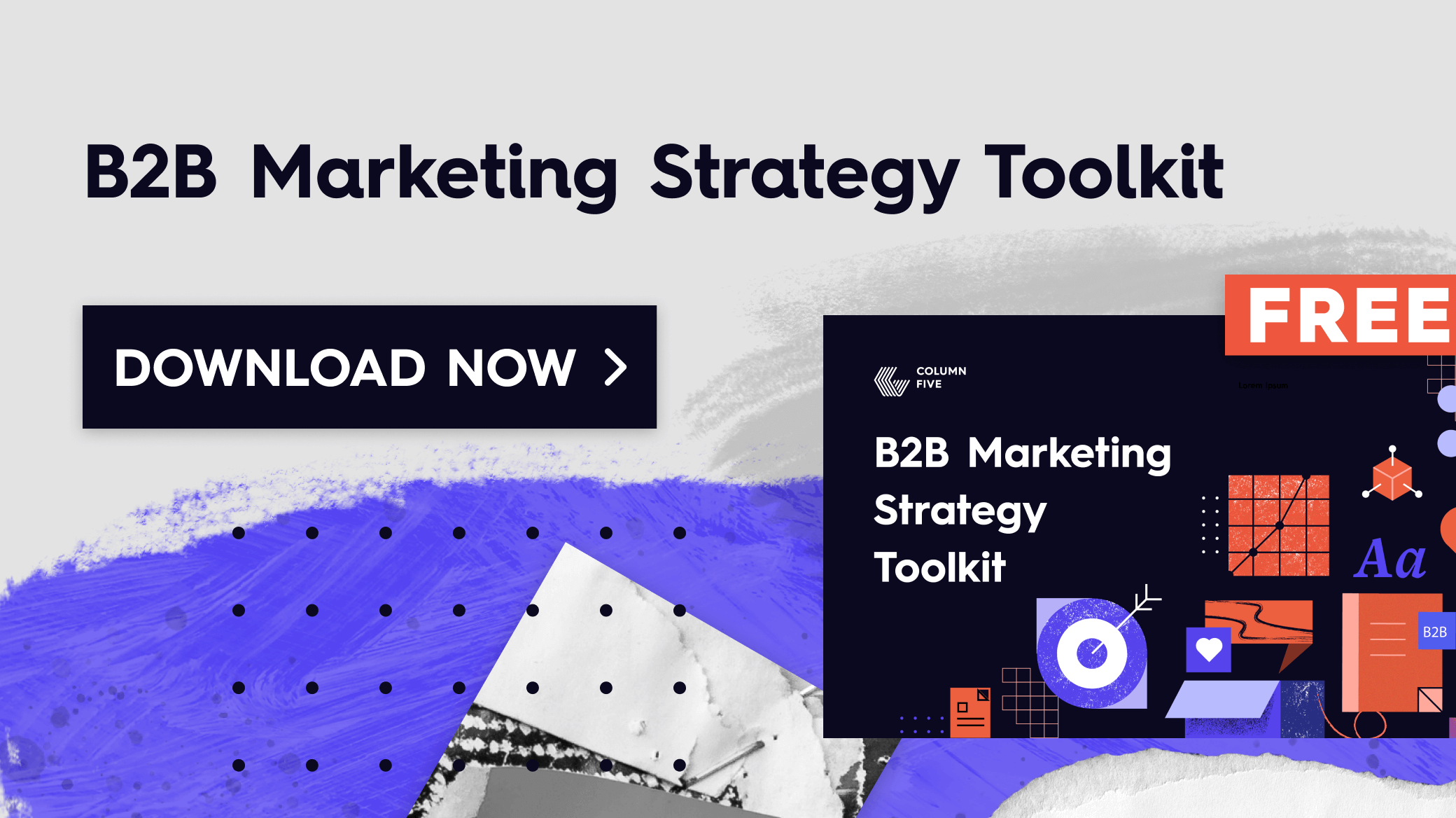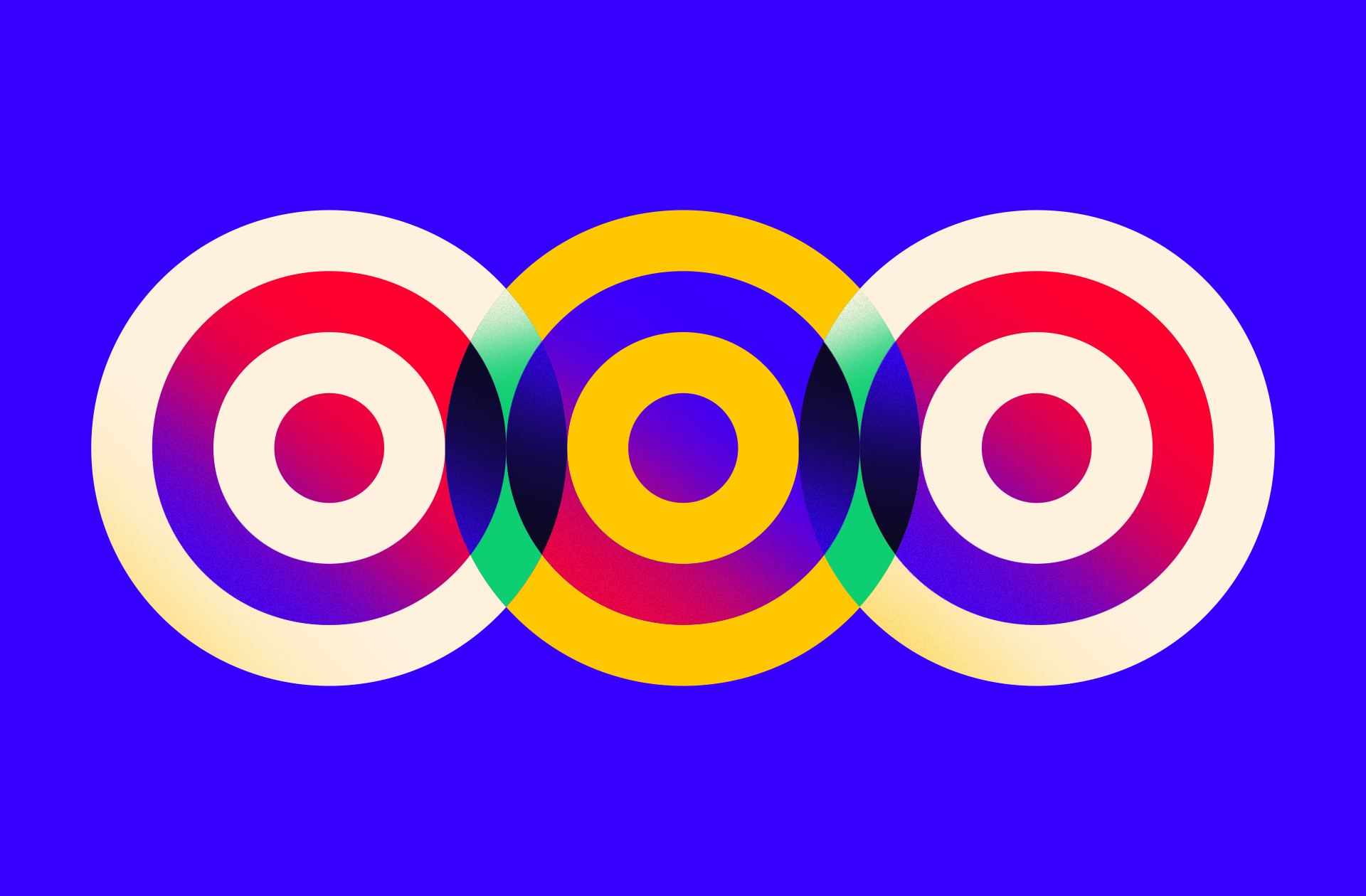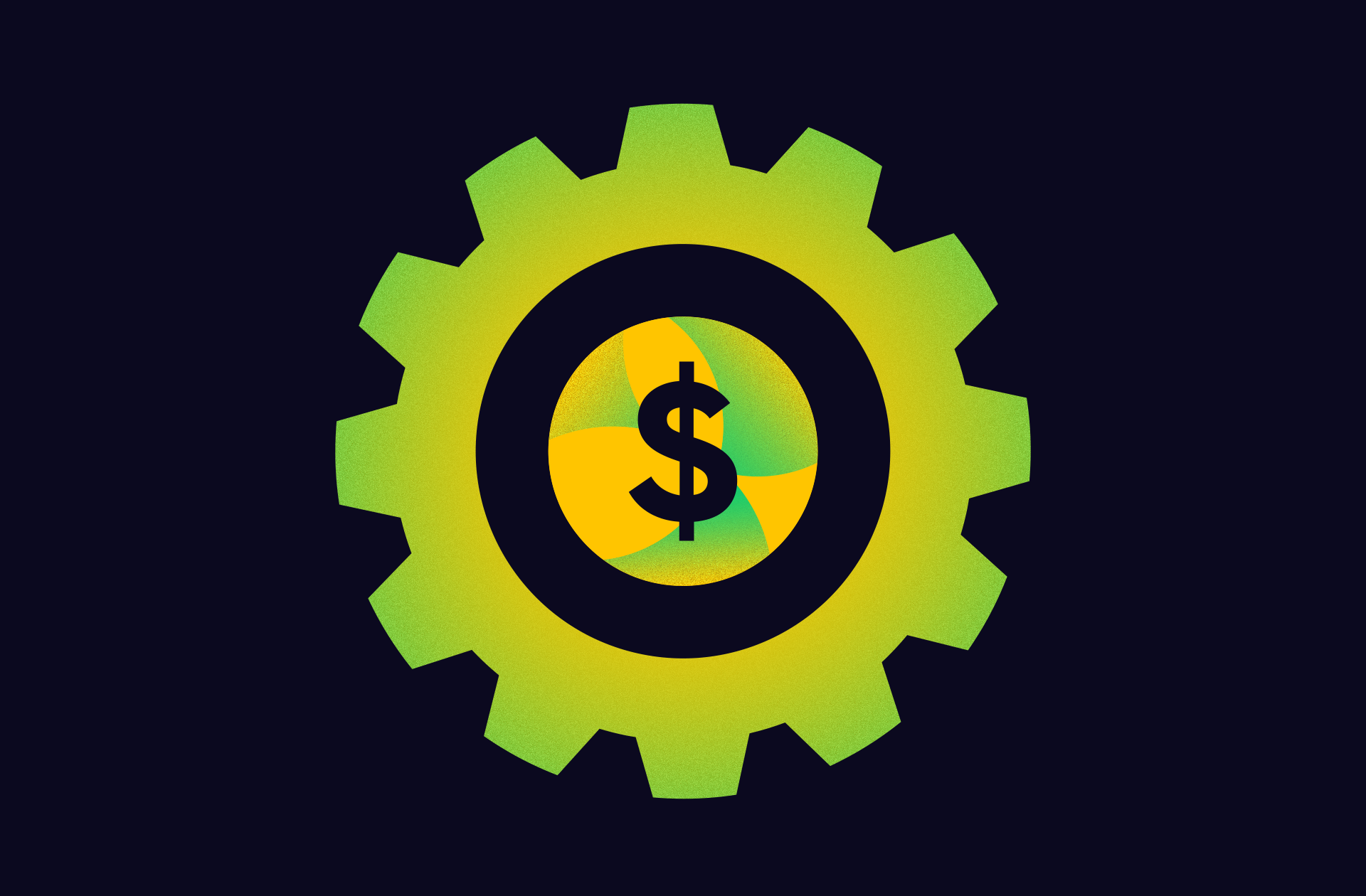As budgets tighten and markets become more competitive, it’s harder and harder to close a deal in the SaaS space. That’s why it’s so important to build out customer acquisition strategies that target the right audiences and entice them to take action.
Unfortunately, many brands splinter their focus between top-funnel marketing (to build brand awareness and relationships) and bottom-funnel sales conversations (to close the deal), neglecting the oh-so-crucial customer acquisition stage to move people down the buyer journey. (Admittedly, we’ve been guilty of this too.)
But if you want to bridge marketing and sales effectively, you need to carve out strong customer acquisition strategies that work effectively. Fortunately, we can help you do that. But first, let’s talk about what customer acquisition actually is.

What Is Customer Acquisition?
Customer acquisition is, in essence, the process of attracting new customers. Although it is technically a marketing function, traditional marketing tactics are usually focused on brand awareness and audience engagement. Customer acquisition is more narrowly focused on speaking to the audience who already knows who you are—and convincing them to take real action toward becoming a customer (e.g., signing up for a demo, downloading an e-book, joining your email list, etc.).
What Do You Need to Implement Successful Customer Acquisition Strategies?
If you want to create strong customer acquisition strategies, you need to set yourself up for success with the right tools, infrastructure, and ability to execute. To start, you need to have the following:
- Ideal Customer Profiles and Personas: If you don’t have an intimate understanding of who your audience is, what they need, and what problems they’re trying to solve, it will be nearly impossible to convince them to take the next step. For this reason, it’s crucial to have both ICPs and personas clearly documented. (See our handy guide to get both on paper.)
- Customer Acquisition Cost (CAC): This is how much it costs to acquire a new customer. The formula for CAC = Total Acquisition Costs / Number of New Customers Acquired. Your CAC is important to understand how well your efforts are working and how you can work to lower that number (as your goal is to acquire new customers for less investment).
- Customer Lifetime Value (CLV): This shows you how much value a customer brings during the course of the relationship with your business. The formula for CLV = Average Purchase Value × Purchase Frequency × Customer Lifespan. By understanding both CAC and CLV, you can better understand how your strategies are working and work to improve ROI for your overall customer acquisition efforts.
- Measurement infrastructure: No matter how smart your strategies are, you must have a way to effectively measure your efforts. (You also need to know which metrics to measure). Ensure you have the appropriate tools and infrastructure in place to do this well.
If you already have this information documented, give it a once-over to ensure it is accurate before you start to implement the following strategies across channels.
7 Smart SaaS Customer Acquisition Strategies
If you’re looking for more ways to strengthen your buyer journey, here are our best tips to reach the right people and maximize conversions.
1) Create quality content for Search Engine Optimization.
SEO has been the mainstay of marketing efforts for years, but as Google refines its algorithm and AI changes the way people find information, your old SEO strategies may not work as well. These days, it’s important to focus on an EEAT strategy for acquisition.
- Experience: You may have noticed that every keyword is cluttered with fluffy articles that regurgitate the same information. Nowadays, people are desperate to hear thought leadership from people who have experienced real-life wins, failures, and lessons. If you want to provide more value to your audience, share your personal perspective and anecdotes that reflect your experience.
- Expertise: People always want to hear from experts. Share your pro tips and insights to educate your audience and gain credibility.
- Authoritativeness: There are a million people who call themselves experts, but not everybody holds real weight in their industry. The more people link to your site and the higher your authority score is, the more you’ll be seen as a respectable resource.
- Trustworthiness: People want to know that your site is trustworthy and worth engaging with. Ensure you’ve covered your bases in terms of things like site security—and provide transparency about who you are as a brand to increase trust.
If you want to strengthen your EEAT for customer acquisition, serve the most valuable content to your audience and give them clear next steps to take based on said content.
Tip: Create high-quality content, accompanied by downloadable toolkits, templates, or guides to help them solve a problem or do something more effectively. Use data storytelling (e.g., proprietary research or case studies with strong results) to demonstrate your expertise and real-life results. If you want to tap into your audience’s most burning questions about a topic, plug in any topic to Answer the Public, review the related questions generated, and think about what types of gated content you can create to answer those questions.
You can also check out SEMRush’s deep dive on the power of EEAT for more ways to speak to your audience effectively.
Example: Our Guide to Build a Brand Strategy is our #1 most popular piece of content that has converted the most customers.
2) Use paid search (PPC) to target the right audience.
PPC can be a great strategy, as long as you follow the right rules to avoid wasting funds on an ineffective campaign.
- Research the right keywords. Consider the keywords you want to target, as well as the negative keywords you do not want to target. (See our guide to find the right keywords for your campaigns.)
- Create strong landing pages. They should be well-designed, mobile-responsive, and optimized for conversions.
- Consider your audience’s most active times. Schedule ads to go live then.
- A/B test everything. Try different ad formats, keywords, creative, etc. to see what resonates.
You should also start with a basic test to ensure your funds are used efficiently.
Tip: Make sure you have the right tools set up to measure your campaign success.
3) Use organic social media to engage with your audience.
Social media is a great way to boost your content, connect with customers, and entice them to take action. And if you’re investing in quality SEO content, it’s also a great place to repurpose that content. There are all sorts of ways you can do this.
- Create a tip series.
- Share smart hacks.
- Educate people about your brand.
- Show them how to solve problems.
- Use video to grab attention.
Social is also the perfect channel to tease gated content. Share previews or snippets, and encourage people to go to your site to download your toolkits, templates, or guides.
Tip: When people are deciding if they want to work with you, they don’t only judge your product, tool, or service. They can also be highly swayed by the people who work behind the scenes. Follow these tips to showcase your people and culture on social media.
Example: Freshbooks uses Instagram to entertain and educate, providing high-value content to their audience with every post.
View this post on Instagram
4) Use paid social to convert.
Paid social is a great way to amplify your downloadable content, tips, tools, and guides. Just make sure to follow best practices.
- Choose the right platforms. While every social platform has its benefits, LinkedIn is gold for SaaS customer acquisition.
- Make ads that stand out in people’s feeds. You need attention-grabbing design, copy, CTAs, etc. Consider which format is the best for your ad as well (e.g., carousel, video, static image, etc.).
- Identify the right audience. LinkedIn has helpful audience templates to get you started.
- Create landing pages that are optimized for conversion. You want your audience to take the next step, so make it as easy as possible for them.
Tip: You can also partner with influencers to increase visibility and credibility with your audience.
5) Engage people through email.
Your email list is full of people who may be on the cusp of becoming customers. This makes it one of the most important channels for customer acquisition, and it requires a proper strategy like anything else. Remember: Your goal is to keep your brand top of mind and convince people to take the next step.
- Segment your list to better target different audiences.
- Personalize the content.
- Launch high-value drip campaigns that provide relevant education or engaging content.
- Include compelling CTAs.
The good news is email subscribers are already interested in your brand, so they are more inherently invested in the content you provide.
Tip: Poll your subscribers to find out what type of content they’re interested in. Not only does this make them feel seen and heard but it helps you give them exactly what they need. When we did this for our own agency, we found out our email subscribers favor content that features real-life marketing examples. This helped us better curate our editorial mix to appeal to their needs. (For more ideas, you can also see these 10 tips to improve your SaaS email marketing.)
6) Tap your network for referrals.
Referrals are always one of the best ways to acquire new customers, as a customer co-sign increases your credibility. You can garner referrals directly and indirectly, using a variety of tools.
- Use Net Promoter Score (NPS) surveys to identify customers most likely to refer you, and ask them directly. (This also goes for the clients you have the most longstanding relationship with.)
- Create a referral program that benefits the existing customer and the new customer (e.g., discounts, freebies, etc.).
- Ask your favorite customers to write online reviews or submit to directories and other relevant online databases.
- Create compelling case studies that tell a strong story.
- Publish testimonials across channels.
Tip: As previously mentioned, email is a great channel to engage, so you can easily send personalized emails to your happiest customers to ask them for referrals. (You can also include special incentives and easy links to make the referrals even easier.)
Example: Case studies are an easy way to demonstrate social proof, especially when you can share impressive results. Hubspot does this well by showcasing simple, short customer success stories on their Instagram.
View this post on Instagram
7) Go to events to convert people IRL.
Events have always been an effective way to meet and convert customers in real life. And in a post-pandemic world, there are actually more opportunities to engage than ever, as you can host both online and in-person events.
- Think about your specific business goals, then select the type of event that would be most relevant. Again, there are more options than ever for every budget and goal: a multi-day conference, webinar, conference, trade show, online event, local community event, etc. Even something simple like a virtual “in conversation” series with industry leaders on YouTube is a low-lift way to engage with your community.
- Sponsor or partner with other brands to participate in their event. If you can be a featured speaker, you can gain both visibility and credibility.
- Create teaser campaigns announcing your event (or that you’ll be attending an event). This helps you increase visibility and even start conversations before the actual event.
Tip: If you’re hosting an in-person event, film as much content as you can. This gives the event a second life online and ensures the valuable information shared can engage even more people.
Example: Hubspot does this well. Inbound is their biggest conference of the year, and they share event recaps, conversations, and highlights on their YouTube channel to bring an online audience into the event.
How to Improve Your Customer Acquisition Strategies Over Time
Your customer acquisition strategies will be ever-evolving, particularly as you learn, iterate, and gather more insights.
- Ensure your value prop is accurate. One of the most pervasive problems we see in the SaaS space is that brands struggle to communicate who they are and what they do effectively. Use our free brand messaging template to ensure your value prop and messaging are as compelling as possible.
- Audit your competition. If you want to compete in your industry, you need to pay attention to what other people are doing. Use our free guide to audit your competitors’ efforts to see how they present themselves and why they may be more effective at customer acquisition.
- Stay nimble. No strategy is set in stone, and as market conditions change, trends come and go, and new technologies arise, it’s important to adapt. With every new strategy you implement, focus on learning and getting the most insights possible.
That said, we know it can be difficult to stay on top of everything. Sometimes, you need the right partner to help you bring your strategies to life. If you’re on the hunt for a helpful team, follow these tips to find an agency partner with the right expertise, or start your search by reviewing our FAQs or reaching out to us directly.
But above all, whether you partner up or go it alone, the number one most important thing you can do is stay educated. If you want more tips and insights into customer acquisition and more, subscribe to our Best Story Wins podcast to hear thought leaders share how they win hearts, minds, and market share every day.





